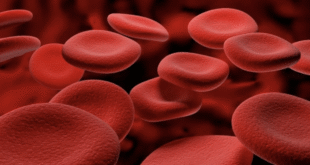Müge Bolatkale
Department of Molecular Biology, Biruni University, İstanbul, 34010, Turkey
KEYWORDS: tumor, gene, tumor supressor, retinoblastoma, p53, Wilms’ tumor, APC, CD-95.
ABSTRACT
Many genes need to work together for a normal cell to grow and reproduce. Cells synthesize proteins for growth factors to fulfill their functions. In case of a serious flaw in DNA, life signals leave their place to death signals, and as a result, the cell stops growing and dividing and goes to death. Tumor suppressor genes produce proteins that inhibit cell growth and division when necessary. If a mutation in a tumor suppressor gene results in the loss of function of the protein of that gene, cell death does not occur at the required time, since the impediment to reproduction will be removed. In this case, the cell continues to live and reproduce and prepares the ground for cancer formation. Tumor suppressor genes continue to be discovered, such as growth inhibitory codes. [o]. In this review; it will be mentioned about Retunoblastoma (Rb), Tp53, APC, Wt1 and CD-95 tumor suppressor genes after a general overview of tumor and cancer.
CONTENTS
1. INTRODUCTION
2. RETUNOBLOSTOMA
3. Tp53
4. APC
5. WILMS’ TUMOR GENE
6. CD-95
1.INTRODUCTION
Tumors it is a swelling or mass that results from cell growth and division. As another definition; The masses formed as a result of cells growing and dividing to produce new cells in a controlled and orderly manner are called “tumors”. It is classified according to the behavior of the tumors, and the treatment methods vary according to the behavior of the tumors. Hippocrates is the first person to group tumors in this way. According to Hipprocrates, tumors; It is divided into two as harmless and dangerous. Today, it is referred to as “benign” ie benign and “malignant” ie malignant (cancer) [1][2]. On the other hand, genes are transcribed, regulatory regions of DNA that perform specific tasks, whose location can be identified in the genome sequence. Genes are names given to regions of DNA that describe certain physical characteristics, perform certain genetic tasks, and have specific starting and ending points. The gene is the functional unit of heredity. Each gene is made up of nucleotide sequences, such as a protein or RNA molecule [3][4].

Cancer cells are neoplastic. They are malignant, grow and reproduce in defiance, and can colonize even distant organs. Metastases make it difficult to eradicate by surgery or local irradiation. Tumor progression usually takes many years. As cancer cells evolve, they multiply and spread, and acquire various special features. In the evolutionary process of tumor progression, cancer cells have many abnormalities, such as apoptosis defects and mechanisms that protect cells, permanently halting cell division in response to DNA damage. All these abnormalities increase the survival, growth and division of cancer cells [6].

Proto-oncogenes and mutations in tumor suppressor genes are also among the gene groups that lead to the formation of cancer cells.Cancerous cells that do not take into account the regulation processes in the body begin to grow uncontrollably. Oncogene; It is the form of a normal gene that has been mutated, induced uncontrolled proliferation, or transformed to provide the advantage of selective reproduction. They are genes encoding protein and play an important role in cancer development. Many gene disruptions occur in the genetic makeup of the cancer cell, but it has been observed that uncontrolled growth in some cancers is due to a single gene. The most important evidence supporting oncogene dependence is drugs that target a single oncogene in certain types of cancer. Oncogene; It may be vital for the cancer cell. The distinguishes cancer cells from normal cells is the differences in intracellular signaling pathways and genes activity. Oncogene addiction is one of the weak points of cancer. Oncogenes in cancer cells can be obtained by stopping the activity of genes with miRNA and observing which gene is important for the cancer cell [7]. The tumor suppressor genes are genes that suppress cell division. Loss of normal function of both alleles causes uncontrolled cell division and tumor growth. Presence of normal allele suppresses tumor growth. Mutations of tumor suppressor genes are recessive at the cellular level. Mutations in tumor suppressor genes can have similar effects in promoting cancer development. For example, overproduction of the signal for cell proliferation. This happens in both mutations. When a cancer cell is examined, the tumor suppressor genes and the mutations affecting them are two different sides of the same event [8]. Changes in tumor suppressor genes lead to unlimited cellular growth by different mechanisms. Various experimental approaches have been used to identify defective tumor suppressor genes; cytogenetic studies, chromosomal changes, DNA linkage approaches to localize genes related to hereditary susceptibility to cancer. What is required for all of these is advanced positional cloning to identify and isolate tumor suppressor genes from the chromosomal region of interest. Today, many tumor suppressor genes have been identified in susceptibility to cancer (figure 3 ) [9].

As time passed and studies increased, the cellular functions of tumor suppressor genes became better understood [11].
2. RETUNOBLASTOMA : The discovery of the first tumor suppressor arose from studies of retinoblastoma, a rare type of human cancer. This work; It arises from cells in the retina of the eye and is transformed into cancer by these cells. Retinoblastoma occurs in childhood and tumors develop from the neural precursor cells in the immature retina. About one in 20,000 children have this disease [12]. Retinoblastomas grow quickly. They can occur in the eyeball and eye cavity, as well as spread to other organs through the eye nerve and central nervous system (CNS), blood vessels or lymph vessels. If the disease is not treated, it almost always results in death. However, in rare cases (1%) the tumor disappears spontaneously; this situation is called spontaneous regression [13].

3. TP53 and P53: The p53 protein synthesized by the TP53 gene is one of the most important tumor suppressor genes that are frequently mutant in cancers. p53; It stops the cell division before proceeding to the synthesis phase by recognizing the damaged DNA molecules during division. (Synthesis phase: The phase in which the DNA double helix is opened and copied to be transferred to the newly formed cell.) If the DNA is faulty, the duplication will be erroneous. Therefore, the P53 gene holds the cycle to allow the repair of DNA damage. Correction of DNA damage, preventing the transfer of defects by division to the next generation, stabilized and activated by various genotoxic and cellular stress signals such as hypoxia, oncogene activation and nutrient deprivation, and consequently cell cycle arrest, apoptosis, aging and metabolic adaptation. has functions. p53 directs the cell to death in cells with irreparable DNA damage. Thus, in terms of function, the TP53 gene is a tumor suppressor gene.
However, it has been shown that some mutations in the TP53 gene cause the gene to act as a tumor suppressor and some mutations to act as an oncogene. If the P53 protein does not work properly, it contributes to the cancer process by preparing the ground for the accumulation of DNA damage [15].
4. APC: People who carry an inherited mutation in tumor suppressor genes are susceptible to one or more types of cancer. It is the recently discovered tumor suppressor gene responsible for APC (adenomatous polyposis coli), familial adenomatous polyposis (FAP) mutations. It binds cytoplasmically to beta 2-catenin (homologous to the product of Drosophila armadillo), which is associated with the cell adhesion molecule E-cadherin. APC protein; It regulates many cellular functions such as cell division, cell migration, and maintaining stability of genetic information. Suppression of the function of APC, which has vital roles for cells, is considered as an initiating event for colorecteral cancer. Molecular studies have shown that the majority of colorecteral tumors have inactivating APC tumor suppressor [16] [17].
5. WILMS’ TUMOR GENE: The Wilms tumor 1 (wt1) gene is one of at least three genes involved in the development of Wilms’ tumor, a pediatric kidney cancer. Wilms tumors are mostly seen in children with hereditary cancer syndrome. Although there is neither an inherited cancer syndrome nor a predisposition to this disease in the family, a tumor can be seen. The expression pattern of the gene shows that wt1 not only plays a role in kidney development, but also in the development and homeostasis of several other tissues. The reasons for the occurrence of Wilms’ tumor are not fully known until today and environmental factors do not. However, it is known that changes in certain genes and chromosomes contribute to the development of this disease. The gene that has been best studied so far is the so-called Wilms tumor gene 1 (WT1 gene); this gene is located on the 11th chromosome. The WT1 gene plays a key role in normal kidney development, and if it changes shape, it can lead to tumor formation and / or other developmental disorders [18].
6. CD-95: The CD95 (Apo-1 / Fas) receptor-ligand system is one of the main regulators of apoptosis. There is evidence that the susceptibility of tumor cells to CD95-mediated apoptosis is greatly reduced [19].
DISCUSSION
Tumor suppressor genes are normal genes that slow cell division, repair DNA errors, or tell cells when to die. When tumor suppressor genes don’t work properly, cells can get out of control, which can lead to cancer. Difference between oncogenes and tumor suppressor genes; it is the activation of proto-oncogenes by oncogenes. But tumor suppressor genes cause cancer when inactivated. Abnormalities of the TP53 gene (encoding the p53 protein) have been found in more than half of human cancers. Acquired mutations of this gene are seen in a wide variety of cancers [20].
CONCLUSION
In this review, the summarize the specific tumor suppressor genes. Tumor suppressor genes are important in carcinogenesis. Various tumor suppressor genes have been identified in recent years. Tumor suppressor genes are inactivated by somatic mutations that occur during tumor development. In the future, more complete identification and understanding of carcinogenesis will emerge by identifying tumor suppressor genes, detailed characterization of normal cellular functions, and elucidating the germline and somatic mutations that lead to inactivation of these genes in human tumors. Although research has not yet been completed, a better understanding of tumor suppressor genes, coupled with our ability to manipulate the genome with gene therapy, has the potential to open broad horizons in the treatment of various human malignancies [21][22].
REFERENCES
[1]: Kumar V, Abbas AK, Aster JC. Robbins and Cotran Pathologic Basis of Disease. 9th edt., Elsevier Saunders, Philadelphia, 2015. [2]: Fletcher CDM. Diagnostic Histopathology of Tumors. 5th edition. Elsevier, Amsterdam, 2019. [ 3 ] : P e a r s o n H ( 2 0 0 6 ) . “Ge n e t i c s : wh a t i s a gene?”. Nature. 441 (7092). ss. 398-401. PMID 16724031. [4]: Elizabeth Pennisi (2007). “DNA Study Forces Rethink of What It Means to Be a Gene”. Science. 316 (5831). ss. 1556-1557. [5]: picture from: https://www.researchgate.net/profile/ Wol fgang_Voos /publ icat ion/13775064/ f igure/ f ig2/ AS:601765380624400@1520483455381/Nucleotide-and-aminoacid-sequence-of-GRD19-gene-region-A-Underlined-nucleotide. png. [6]: Hausman DM. What Is Cancer? Perspect Biol Med. 2019;62(4):778-784. doi: 10.1353/pbm.2019.0046. PMID: 31761807. [7]: Nobel Prize in Physiology or Medicine for 1989 jointly to J. Michael Bishop and Harold E. Varmus for their discovery of “the cellular origin of retroviral oncogenes”. 28 Aralık 2017. [m]: picture from: https://ccr.cancer.gov/news/horizons/article/ cell-metabolism-and-cancer. [8]: Mange EJ & Mange AP. Basic Human Genetics, 1999, 365. Second Ed. [9]: The Biology of Cancer, Garland Science, 2014. [10]: picture from: https://www.letstalkacademy.com/ publication/read/tumour-suppressor-genes-in-cancer. [11]: Tumor suppressor genes, Charles J. Yeo, MD, Baltimore, Md, From The Johns Hopkins Medical Institutions, Baltimore, Md, April 1999. [12]: Molecular Biology of the Cell, Bruce Alberts ve James Dewey Watson. [13]: Ryan, Stephen J.; Schachat, Andrew P.; Wilkinson, Charles P.; Hinton, David R.; Sadda, SriniVas R.; Wiedemann, Peter (2012-11-01). Retina. Elsevier Health Sciences. p. 2105. ISBN 978-1455737802. [14]: picture from: https://www.news-medical.net/health/ Retinoblastoma-Malignant-Tumor-of-the-Retina.aspx. [15]: Hong B, van den Heuvel AP, Prabhu VV, Zhang S, El Deiry WS. Targeting tumor suppressor p53 for cancer therapy: strategies, challenges and opportunities. Curr Drug Targets. 2 0 1 4 J a n ; 1 5 ( 1 ) : 8 0 – 9 . d o i : 10.2174/1389450114666140106101412. PMID: 24387333. [16]:Hülsken J, Behrens J, Birchmeier W. Tumor-suppressor gene products in cell contacts: the cadherin-APC-armadillo connection. Curr Opin Cell Biol. 1994 Oct;6(5):711-6. doi: 10.1016/0955-0674(94)90098-1. PMID: 7833051. [17]: Pećina-Slaus N. Tumor-supresorski geni s posebnim osvrtom na tumor-supresorski gen APC [Tumor suppressor genes with special emphasis on the APC tumor suppressor gene]. Lijec Vjesn. 1998 Jul-Aug;120(7-8):219-27. Croatian. PMID: 9919881. [18]: Menke AL, van der Eb AJ, Jochemsen AG. The Wilms’ tumor 1 gene: oncogene or tumor suppressor gene? Int Rev C y t o l . 1 9 9 8 ; 1 8 1 : 1 5 1 – 2 1 2 . d o i : 1 0 . 1 0 1 6 / s0074-7696(08)60418-0. PMID: 9522457. [19]: Müschen M, Warskulat U, Beckmann MW. Defining CD95 as a tumor suppressor gene. J Mol Med (Berl). 2000;78(6):312-25. doi: 10.1007/s001090000112. PMID: 11001528. [20]: Macleod K. Tumor suppressor genes. Curr Opin Genet D e v . 2 0 0 0 F e b ; 1 0 ( 1 ) : 8 1 – 9 3 . d o i : 1 0 . 1 0 1 6 / s0959-437x(99)00041-6. PMID: 10679386. [21]: Yeo CJ. Tumor suppressor genes: a short review. Surgery. 1999 Apr;125(4):363-6. PMID: 10216524. [22]: Zhao D, DePinho RA. Synthetic essentiality: Targeting tumor suppressor deficiencies in cancer. Bioessays. 2017 Aug;39(8). doi: 10.1002/bies.201700076. Epub 2017 Jul 4. PMID: 28675450. Genetikçe Everything about science.
Genetikçe Everything about science.



